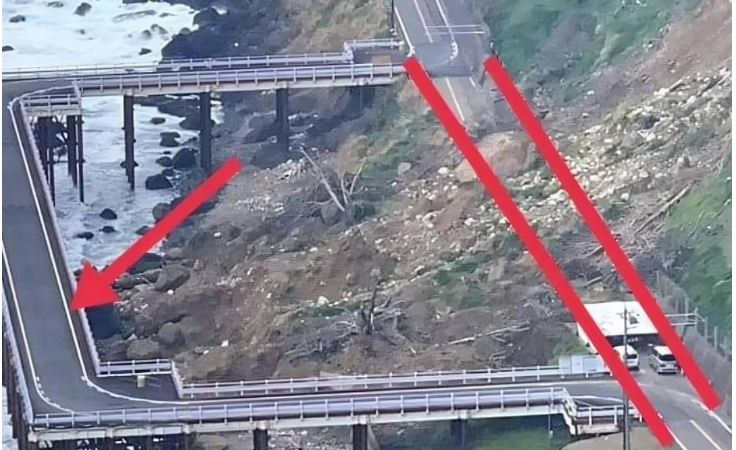The Science Behind Curved Bridges: Why They Aren’t Always Straight
At first glance, a straight bridge seems like the most efficient way to connect two points. After all, the shortest distance between two points is a straight line, right? While that may hold true in theory, real-world environments often call for more creative solutions. Curved bridges, despite appearing more complex, are designed to handle various environmental and structural challenges.
Curved bridges aren’t just about style—they offer practical benefits that contribute to their longevity and stability. Let’s take a closer look at why engineers sometimes prefer curves over straight lines.
Protection from Landslides and Other Natural Hazards
One of the most important reasons for building curved bridges is to protect them from natural hazards like landslides. When bridges cross through mountainous or hilly terrain, landslides can pose a significant threat, particularly in areas prone to heavy rain or earthquakes. A straight bridge might be more vulnerable to the full force of a landslide, as the force would hit it head-on.
How Curves Help Deflect Forces
Curved bridges, on the other hand, are better at withstanding these sideways forces due to their shape. The curve allows forces to be distributed more evenly across the structure, reducing the risk of concentrated damage. This design helps to deflect some of the force along the length of the bridge, rather than letting it focus on a single section.
By spreading out the impact, curved bridges remain more stable and are less likely to suffer significant damage in the event of a landslide.
Improving Load Distribution and Stability
In addition to protecting against landslides, curved bridges offer structural advantages that make them ideal for certain landscapes. Bridges must bear both vertical loads (the weight of vehicles, people, and the bridge itself) and horizontal loads (wind, seismic activity, and lateral forces like landslides).
Curved Bridges Evenly Distribute Loads
Curved bridges naturally distribute weight and pressure more evenly across the entire structure. This means that no single part of the bridge is under too much strain, reducing the risk of failure. Straight bridges often concentrate pressure in specific points, which can create vulnerabilities. Curved designs help prevent this by spreading the load, ultimately extending the life of the bridge.
This even load distribution also contributes to a smoother experience for vehicles, as the bridge can flex slightly under heavy loads without compromising its structural integrity.
Navigating Challenging Terrain
Another reason for building curved bridges is to navigate difficult terrain. In regions with mountains, rivers, or uneven landscapes, laying down a straight bridge might be impractical or even impossible. Engineers often have to work with the natural contours of the land, which may require them to incorporate curves to avoid obstacles like steep slopes or rock formations.
Maneuvering Around Obstacles
Curved bridges allow designers to adjust the path of the bridge to follow the natural terrain. Instead of attempting to remove obstacles—which can be expensive and environmentally damaging—engineers create a curved bridge that winds around these features. This approach not only makes construction easier but also helps preserve the surrounding environment, which is a critical consideration in today’s eco-conscious world.
Enhancing the Bridge’s Aesthetic Appeal
While practicality is a key factor, aesthetics also play a role in the decision to build a curved bridge. Bridges are often highly visible structures that contribute to the visual character of a landscape. Curved bridges frequently appear more harmonious with their surroundings, blending with the natural curves of the environment rather than imposing a straight, rigid line.
Creating Visual Harmony
Iconic bridges like the Golden Gate Bridge in San Francisco and the Helix Bridge in Singapore demonstrate how curved designs can enhance the beauty of a location. Engineers use curves not just for practical reasons but to create structures that are visually striking, adding to the bridge’s role as a landmark in its area.
Improving Traffic Flow and Safety
Safety is a critical concern in bridge design, and curved bridges often help improve traffic flow, especially in areas with winding roads or sharp turns. A curved bridge can be a natural extension of a road’s path, making the transition smoother and reducing the need for abrupt changes in direction.
Smoother Transitions for Drivers
For instance, if a bridge connects two points on a curving road, a straight bridge would require sharp turns at either end, which could increase the risk of accidents. A curved bridge, however, follows the road’s natural flow, offering a safer and more comfortable transition for drivers, particularly on highways or elevated roads.
Leveraging Modern Materials and Techniques
Advancements in construction materials and technology have made building curved bridges more feasible and cost-effective than ever. Modern materials like steel and concrete offer the flexibility and strength needed to incorporate curves without compromising durability.
Flexible Materials for Complex Designs
Today’s materials and computer modeling techniques allow engineers to design bridges that can withstand complex stress patterns. This enables the construction of bridges that not only function efficiently but also stand the test of time, even in challenging environments.
Conclusion: Curved Bridges Balance Functionality and Beauty
Curved bridges are more than just interesting design choices—they are practical solutions to complex engineering challenges. By curving a bridge, engineers can protect it from landslides, evenly distribute loads, navigate difficult terrain, and enhance safety—all while adding a visually pleasing element to the landscape.
Next time you see a curved bridge, you’ll know that its shape is more than just for looks. Each curve is a carefully considered element that balances functionality, safety, and beauty, showcasing the ingenuity of modern engineering. These structures remind us that sometimes, the best path from point A to point B isn’t a straight line.



